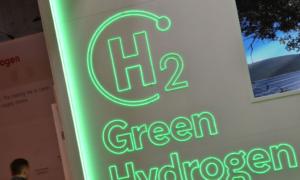NSW Government Allocates $25 Million Towards Hydrogen Centre for Transition to Renewable Energy
This government has mandated a 50 percent reduction in climate change emissions by 2030 and achieving net zero by 2050, with the support of the Opposition.
The NSW government has unveiled the blueprint for the state’s inaugural Hydrogen Centre of Excellence.
A sum of $25 million (US$16.5 million) from taxpayers will be allocated to this initiative as part of a pledge made during elections.
The state recently passed laws aiming for net zero emissions by 2050, a 50 percent decrease in emissions by 2030, and a 70 percent reduction by 2035.
The upcoming hydrogen center will train numerous plumbers and gas fitters to equip them as multi-skilled workers for the emerging hydrogen sector.
The designs feature spacious workshops and classrooms where apprentices will receive practical training with hydrogen equipment, including electrolysers, gas fitting techniques, and safety measures.
Situated in Glenwood, Western Sydney, the center will have a staff of 50 once operational. It will be overseen by the Plumbing Industry Climate Action Centre (PICAC).
During the construction phase, the center is estimated to employ a minimum of 100 apprentices and generate 500 construction jobs.
NSW Premier Chris Minns expressed that the new center would produce numerous job opportunities for the transition to renewable energy.
“We are fulfilling a crucial election commitment to establish a center for the next generation of plumbers, giving them the necessary skills to engage with renewable energy technologies.”
The fresh hydrogen center is anticipated to train and enhance the skills of 8,250 plumbers and gas fitters within the initial five years of operation.
The Minister for Skills, TAFE, and Tertiary Education, Steve Whan, emphasized the collaboration among government, industry, and unions to build a proficient workforce.
“This initiative is essential in ensuring that current and future apprentices and those already in the industry receive top-notch training to meet the demands of the industry in the future,” he stated.
Environment Minister Penny Sharpe added: “This establishment is critical in ensuring that the workforce needed for the renewable energy sector has the requisite skills to accelerate NSW’s transition to clean technologies and net zero.
Challenges Faced in Achieving Net Zero
The Minns government established the Net Zero Commission in December 2023 as part of the Climate Change (Net Zero Future) Act 2023.
This move came following the enactment of the state’s ambitious climate change goals, which garnered backing from the Opposition.
However, Libertarian Member of the Legislative Council John Ruddick remarked that it might be the “most ineffective bill in recent memory.”
“The purported ‘independent’ commission’s goal is to hold the government accountable and ensure a 50 percent reduction in carbon dioxide emissions by 2030 and complete elimination by 2050.”
Decrying the bill and similar laws, he mentioned that normal working families and small businesses were burdened with escalating energy costs while “green elite” individuals made substantial profits.
Based on projections derived from the figures of 2022 and 2023, the state is forecasted to achieve a reduction of 44 percent to 50 percent from 2005 levels by 2030 and 65 percent to 70 percent by 2035.
This prompted the NSW government to acknowledge the hurdles it faces in reaching its objectives, leading to the introduction of a variety of additional measures.
“The statistics from late 2023 underscore the scale of the challenge we confront in reaching our 50 percent reduction target by 2030,” Ms. Sharpe stated in April.
“The NSW government is resolute in fulfilling the legislative targets and is implementing various actions to ensure New South Wales attains those reduction milestones.”
Risks Associated with Energy Bills
Concurrently, a recent report (pdf) cautioned that electricity bills in NSW could surge by $1,100 annually to cover the delays in upgrades to the transmission infrastructure.
Small businesses might face bills of up to $7,716 per year, escalating to $24,124 with a delay of seven years in the transmission infrastructure construction.
The report highlighted the necessity of the transmission infrastructure as part of the shift to renewable energy, which will necessitate additional capacity.
“In order to connect the required renewable generation and storage capacity to substitute aging coal-fired power stations and transition to a clean energy power system, Australia must effectively plan and deliver thousands of kilometers of transmission lines within the next decade,” the document emphasized.





